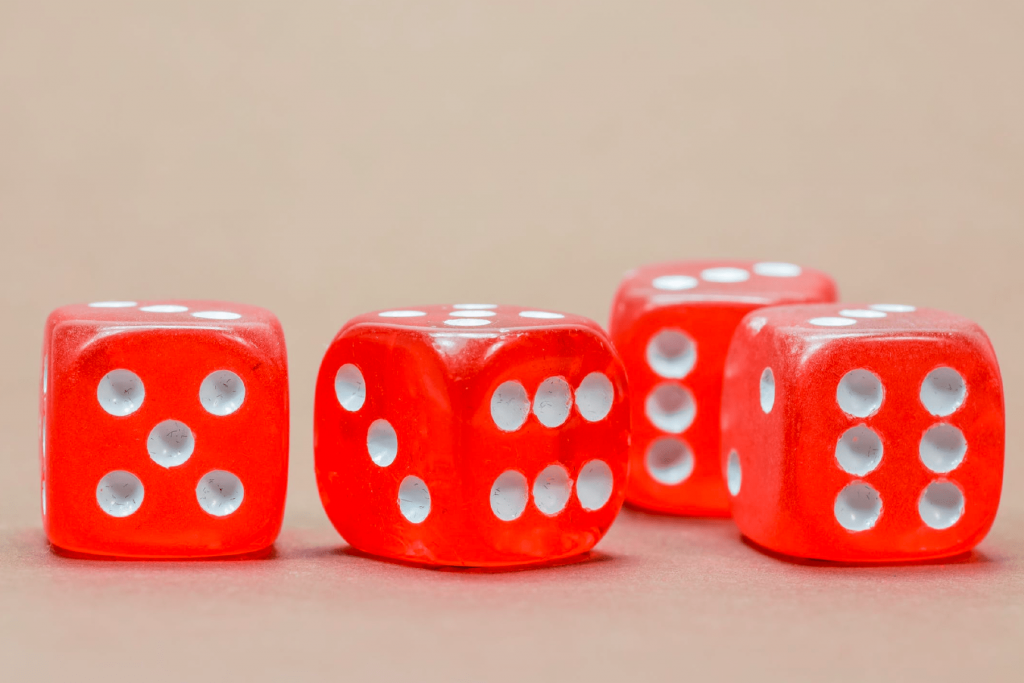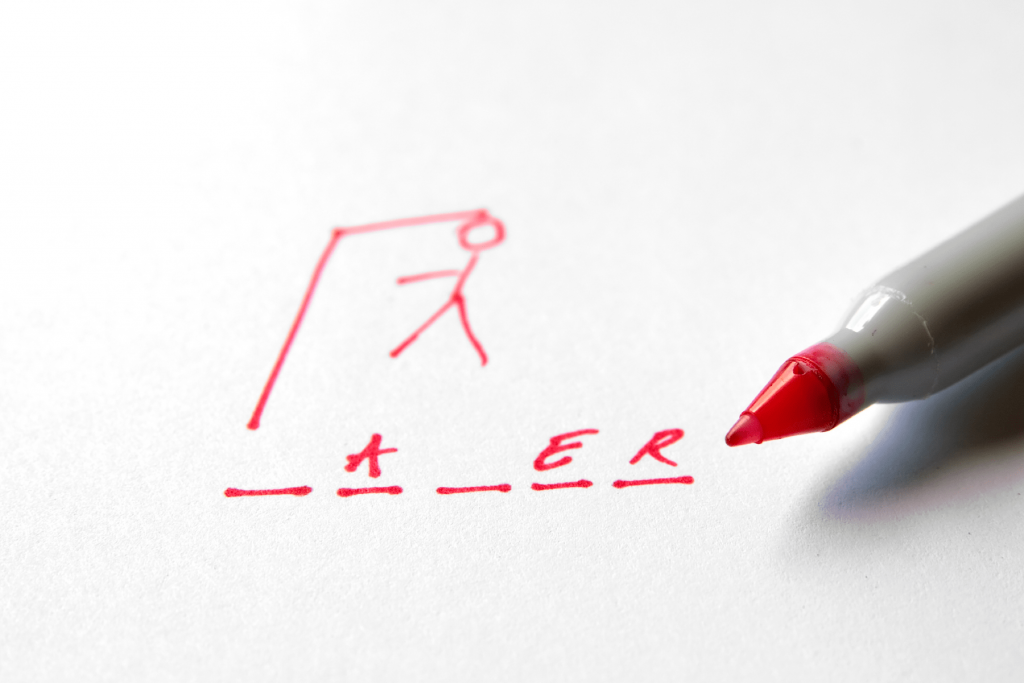Sales training games that actually work
Teaching your employees how to sell by using sales training games (that actually work) is one of the best investments you can make in your business. Sales can be a high-pressure activity, so injecting some fun into the training leads to higher engagement. It has been shown that, in terms of profitability, productivity and customer loyalty, businesses with engaged staff consistently outperform those who aren’t.
Using games to train your salespeople provides the opportunity to sharpen existing skills and learn new techniques. Effective sales training games can provide your salespeople with the following skills:
- Audience identification
- Customer problem definition
- Benefits and features description
- Critical questioning
- Sales closing techniques
Sales training games can be used as icebreakers and to practically demonstrate the key elements of selling.
Here’s a list of seven sales training games that actually work:
1. S’up
2. Dice Exercise
3. Features and Benefits
4. Still don’t get it
5. Gamified cold calls
6. Negotiate
7. Hangman
These games made the list because they can be used by small and big business and include the following features that increase the chances of their effectiveness:
- No expensive equipment required
- An element of public interaction
- No time-consuming requirement

The first sales training game is called S’up and is featured on Userlike.com. The point of this game is to build confidence when approaching strangers. S’up helps salespeople to overcome the reservation of talking to people they don’t know and asking for certain things.
The basics of S’up is for participants to approach strangers and ask them for tokens of varying significance. The more personal the token, the higher the points, for example, a significant quote will earn the participant 20 points and selfie will attract 30 points.
Why S’up as a sales training game actually works:
Sales is all about getting out of your comfort zone. No one likes to face rejection but, the more people are exposed to rejection, the more they learn that it’s nothing to fear. Selling is also about persuading people to do something that they may not be too sure about at first. So, a game that involves approaching strangers to solicit personal information of varying degrees, is a beneficial way for participants to gain confidence in talking to and making requests of people they don’t know.

The dice exercise sales training games is brought to you by trainingcoursematerial.com. It’s a simple game which only requires dice. The dice exercise involves asking for participants to throw as many sixes within a specified period (trainingcoursematerial.com recommend 30 seconds). Set a timer and alert the participants when they have a few seconds left to roll the dice.
This sales training game aims to demonstrate the point that sales is a numbers game and the more you participate (roll the dice) the higher the chance of getting a six (close the sale).
Why Dice Exercise as a sales training game actually works:
This game demonstrates that the chances of making a sale significantly improve when the right customers are consistently approached. Another lesson for participants is that they should apply the same amount of vigor at the start of the sales cycle. While playing the game, it’s not uncommon to see participants increasing the pace of throwing the dice because they only have a few seconds remaining. Some salespeople take it easy at the beginning but get extremely focused when their targets are due to be assessed. Unfortunately, taking this last-minute approach can lead to a sense of desperation, which will be detected by the customer and could lead to the loss of the sale.

Trainerbubble.com presents this simple sales training game that pretty much does what it says on the tin. Participants are kept in one group and the trainer (who’s acting as the customer) provides an outline of a product they want to buy. For instance, “I’m looking for a laptop for my grandson, I want something that’s lightweight, has good memory and at a reasonable price.”
Taking into account the customers’ needs, the participants have to sell an item based on the features and benefits. One person will list a feature, while the other participants take turns to provide a corresponding benefit. Participants who can’t provide a benefit will be ruled out of the game and the person who lists the most benefits wins.
Why Features and Benefits as a sales training game actually works:
Features and benefits allow participants to get used to selling items based on benefits and not just on features and technical specifications. Selling on benefits demonstrates how the item will meet the customer’s needs and make their lives better. Unless the customer is very technical, they may not be too bothered about the specifications of a product. This sales training game helps participants to focus on explaining the things that will offer a solution and make a real difference to the customer.

This sales training game is another offering from Userlike.com. Participants need to venture out to a public place and interact with strangers for this game. The objective of this sales training game is to see how long the participants can get a stranger to speak to them and how much they can get them to cooperate.
The participants will pretend to be tourists who need directions. They will ask for help from passers-by on the street. Those participating in the training will start the conversation by asking for simple directions. If the stranger helps after the first request, the participant needs to keep asking for more assistance. For example, they will ask the stranger to draw a map then, ask for a phone number in case they get lost, etc. The more ways the stranger agrees to help the participants, the more points they are awarded.
Why ‘Still Don’t Get It’ as a sales training game actually works:
In sales, persistence is the name of the game. Salespeople often lose out on a sale because they gave up too soon. Given that 40% of salespeople give up after one follow-up, it’s important to learn the skill of persevering without being annoying. Still Don’t Get It helps the participants to facilitate a ‘if you don’t ask, you don’t get’ mindset. Starting off by asking for basic directions before moving on to more onerous requests, also solidifies the fact that it’s unwise to ask customers for a big sale without firstly building a relationship.

This is another sales training game from Userlike.com. A dedicated training schedule isn’t required for gamified cold calls because this can be played at any time. The purpose of this sales training game is to help employees to make better sales calls. This game can take place if the team are having a slow day and need a boost in morale.
The game is played by the participants making a sales call on speaker phone while their colleagues and their manager listen-in. The manager keeps score of points based on different criteria, such as scheduling a follow-up call and getting an email address. The person who has scored the most points on a single call wins the game.
Why Gamified Cold Calls as a sales training game actually works:
Even with the growth of social media and email marketing, sales calls are sometimes still necessary. There are instances when getting a prospect on the phone is the only way to reach them. Despite being a necessity, most salespeople hate sales calls because of the fear of rejection and not being sure about to say. The gamified cold calls sales training game reduces the pressure of sales calls in some ways. The game provides a fun atmosphere to make a successful call. However, colleagues listening can be a source of additional pressure, but can also be a motivation to make a successful sales call. The manager can help to spur salespeople on during this game by offering a substantial prize to the winner.

Negotiate is another sales training game from trainerbubble.com and involves going out in public to trade items. The participants should be split into two teams and each team must trade items with strangers for something better. The starting item can be something as simple as a pen. The participants need to negotiate the exchange of the pen for something better and continue this exchange until the time runs out. The team that returns with the most valuable item wins the game.
This game involves fair negotiation and it’s not about pressurizing members of the public. Therefore, it’s recommended that both teams are supervised to ensure that enthusiastic participants remain within acceptable levels of negotiation.
Why negotiation as a sales training game actually works:
A salesperson who is a good negotiator will be more effective than one who lacks this skill. This game provides the participants with practical experience of how to give and take to achieve their desired result. Some companies provide their sales staff with negotiable points. Where the points of negotiations are vague, employees should determine and practice how they would navigate certain objections through negotiations.

The classic game of Hangman can be used to test whether the sales training games have been effective. Trainerbubble.com explains how Hangman can facilitate the sales process.
Participants will need to be split into two groups. Each group will be provided with paper, flipchart, and pens. Both groups need to ask a specified number of questions about the training they’ve just received. These questions must not be shared with the competing team. The questions will form the basis of the hangman game.
The teams take turns to ask the other team questions. The team that gets the right answer then asks another question. If a wrong answer is given, a part of the hangman is drawn on the flipchart paper. The winning team is the one with the most correct answers who has ‘hanged’ the opposing team’s ‘man.’
Why hangman as a sales training game actually works:
A sales training session can be regarded as a success if the information provided has been retained. Using Hangman as sales training game tests whether the participants have remembered what has been shared in the session. The positive aspect of using hangman to assess the effectiveness of sales training is that questions are formulated by other participants. This peer participation informs the trainer about what pieces of information have been retained.
Get Serious About Training: Play Some Games!
Sales training games that actually work can be simple and fun. The games above show that a company doesn’t need to have a big budget and use fancy gadgets to provide effective, fun and engaging sales training to its employees.
To get more content on sales and team building ideas, subscribe to the Deputy blog!
